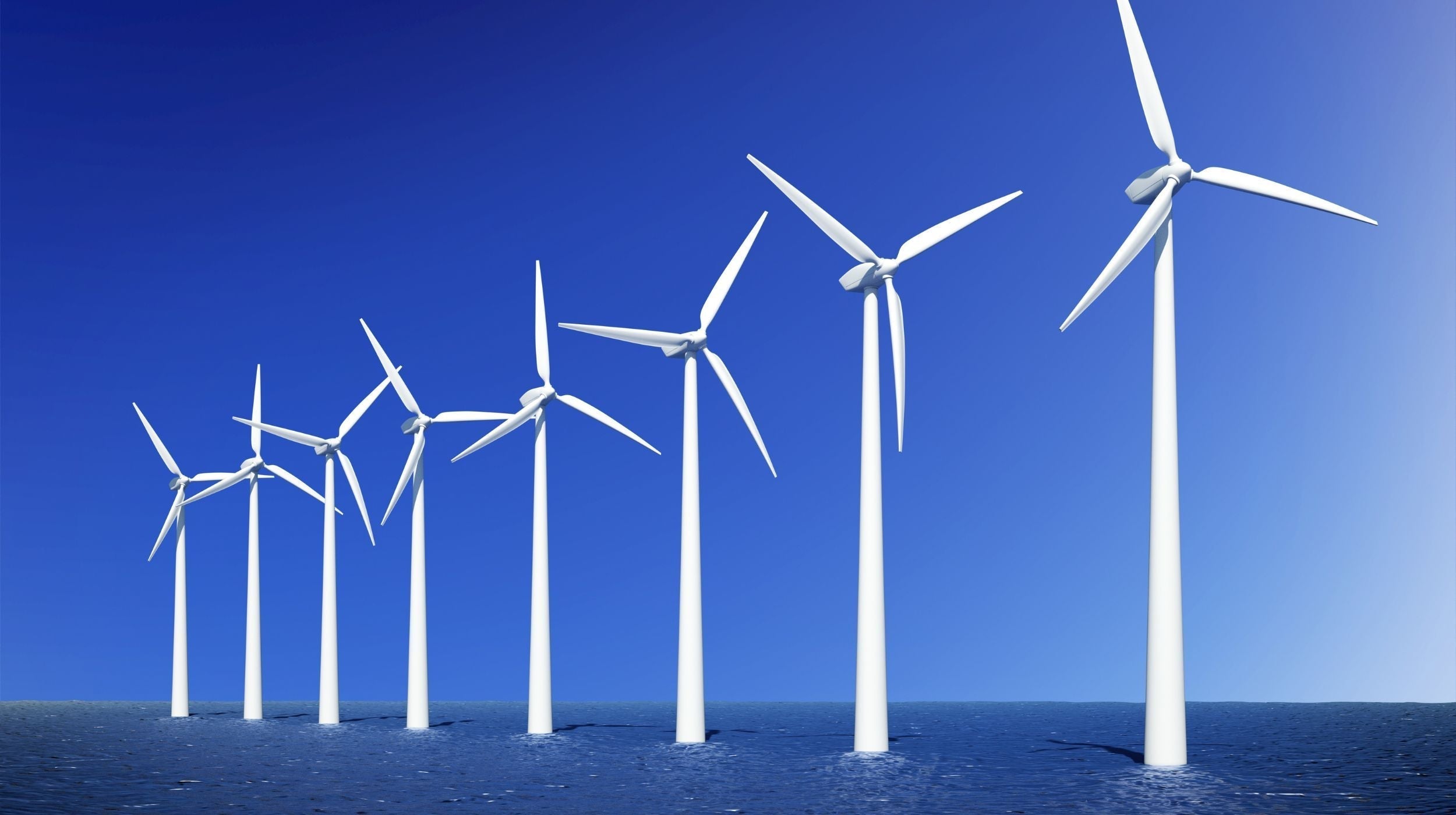
Renewable energy
Do you know the difference between renewable and non-renewable energy? Read more about the future of energy...
Most of our electricity and heating comes from burning fossil fuels, these are found deep in the ground and will eventually run out. But there are other, less harmful ways to make electricity and to heat our homes. Learn about the difference between renewable and non-renewable energy and which energy we are using in the UK. Learn about the sources of energy that won’t run out including wind energy, solar energy, hydropower, geothermal energy and bio energy.
Renewable vs Non-Renewable Energy
Renewable means that the energy won’t run out and includes solar, hydro and wind energy. Renewable energy sources are incredibly important because they don't emit the greenhouse gases that contribute to global warming and climate change.
Non-renewable energy comes from sources that will eventually run out and can’t be replenished in our lifetimes. Most non-renewable energy sources are fossil fuels such as coal, oil and gas. Carbon is the main element in these fuels and burning them creates energy, but it is also harmful for the environment. When fossil fuels are burnt they release carbon dioxide into the atmosphere, preventing heat from leaving and ultimately contributing to the greenhouse effect.

Renewable energy sources can provide power without the planet-warming effects of fossil fuels and are one of the most important changes that we can make to try and slow the effects of climate change. Sources of renewable energy include wind, solar, hydropower, geothermal and biofuel.
“The future is green energy, sustainability, renewable energy.”
- Arnold Schwarzenegger -
Renewable energy in the United Kingdom
Renewable energy now accounts for over 35% of the total electricity generated in the UK; this is an increase from just over 30% the previous year and represents a steady growth in the UK’s reliance on renewable energy sources.
Wind is the biggest source of renewable energy in the UK, representing 21.2% of all electricity generated.
Looking at the UK’s renewable energy sources, onshore wind represents 31.7% of our total renewable electricity generation, followed by biofuel with 28.2% and offshore wind with 27.5%.
In June 2019, the UK Government announced it will set a new net zero greenhouse gas emissions target for the UK, to be delivered by 2050. That means emissions from our homes, transport, farming and industry will have to be avoided completely or offset by planting trees or finding a way to suck CO2 out of the atmosphere.
This is a world-leading target and makes the UK the first member of the G7 group of industrialised nations to commit to such an ambitious aim to combat climate change.
Wind Energy
Wind power is one of the most popular forms of renewable energy. It is produced as air is heated by the sun and moves around the planet, so wind comes indirectly from the Sun - as long as the Sun exists, then the wind will too. The power of the wind has been harnessed by humans for thousands of years to power sailing ships and turn the sails of windmills to grind flour.
Today, the power of the wind is harnessed using large windmills or ‘turbines’, these large poles have 2 or 3 blades that can be turned to face the wind. The structures can reach up to 100 metres tall and the blades can be up to 50 metres in length. They need an average wind speed of around 15 miles per hour but can turn at over 100 mph! As the wind blows, it transfers some of its kinetic energy to the blades, which turn and drive a generator.
In order to create a lot of power, energy companies build large wind farms with up to 100 wind turbines, usually in places that are consistently windy. Some companies build wind farms out in the ocean, these are called offshore wind farms.
Wind energy can be stored in a variety of ways, but the most common is through battery storage. This means that the electricity generated from the wind can be stored and used when resources are running low – perfect for days when there’s not much wind.
Advantages
• Wind is an unlimited, free renewable energy source.
• No harmful polluting gases are produced.
• It takes just 6 to 9 months to pay back the cost to build and install the turbine, after that it provides clean energy for up to 25 years.
Disadvantages
• Wind farms are noisy and may spoil the view.
• The blades may harm birds and bats.
• The amount of electricity generated depends on the strength of the wind.
• If there is no wind, there is no electricity.

“The potential of renewable energy is immense.”
- Tulsi Tanti -
Solar Energy
The Sun releases more energy in just one hour than the world uses in an entire year! The Sun is the primary source of all energy on Earth and without it there would be no life on Earth.
Solar energy is produced when light from the Sun is used for heat energy or converted into electricity that can be used to power our homes, businesses, and even electric vehicles. Solar energy is one of the world’s fastest growing renewable energy resources, between 2007 and 2017 the world's total installed solar capacity increased by 4,300%!
Solar panels or ‘photovoltaics’ capture energy from the sun using cells made from a material called silicon. The Sun’s rays contain particles called ‘photons’, when these photons hit the silicon panel they create electricity. Solar panels don’t need direct sunlight to work as they can even absorb daylight to produce electricity.
Solar panels can be fitted to your roof at home so you can generate your own electricity, however power companies must build huge commercial solar farms to produce enough electricity to power thousands of homes.
Solar thermal panels absorb energy from the sun to heat water, which can then be used in our homes for washing and in appliances.
Advantages
• Solar energy is a renewable energy resource and won’t run out.
• It can also be produced without harming the environment or disrupting local wildlife habitats.
• The maintenance costs are low once the panels are installed.
Disadvantages
• Solar cells are expensive to produce and install.
• Solar cells do not work at night.
• Solar farms need a lot of space.
• Electricity storage is expensive.
“I’ve been very passionate about renewable energy for many years, particularly solar energy and its capacity to bring abundant clean, sustainable energy to millions around the globe.”
- Sir Richard Branson -
Hydropower
Hydropower or water power is the energy harnessed from falling or fast running water, it is considered a renewable source of energy because the water cycle is constantly renewed by the sun. There are several ways that water can be used provide energy including tides, falling water and waves.
Tides: Huge amounts of water move in and out of river mouths each day because of the tides. The movement of this water is a natural form of kinetic energy which can be harnessed by building a tidal barrier or ‘barrage’ across the river. The barrage contains electricity generators which are driven by the water rushing through it.
Hydroelectric power: The most common type of hydroelectric power plant uses a dam that is built across a river valley to store water high up in a reservoir. When the water is released from the reservoir it flows quickly through a turbine, spinning it to generate electricity.
Waves: Waves are a powerful source of energy that can be harnessed to drive electricity generators. The problem is that it is extremely difficult to harness the energy on a large scale and convert it into electricity, therefore wave power stations are rare.

“Hydropower is a clean and renewable energy source that provides affordable power throughout the country.”
- Seth Moulton -
Advantages
• Water power in its various forms is a renewable energy resource.
• No harmful polluting gases are produced.
• Tidal barrages and hydroelectric power stations are very reliable and can be easily switched on.
Disadvantages
• It has been difficult to scale up the designs for wave machines to produce large amounts of electricity.
• Tidal barrages may destroy the habitat of species that live in that ecosystem.
• Hydroelectricity dams may flood farmland and drive people from their homes.
Geothermal Energy
Geo-thermal means ‘the Earth’s heat’ and has been used for thousands of years in some parts of the world for cooking and heating. Geothermal energy is one of the only energy resources that do not come from the Sun.
We live on the Earth’s hard, rocky surface called the crust. Deep below the crust, is a thick layer called mantle with red-hot rocks, in the core at the centre of the Earth the rocks are even hotter still. This heat sometimes breaks through the surface through volcanoes or geysers.
The Earth’s heat can be harnessed in a number of ways; on a smaller scale geothermal heat pumps make use of the consistent temperature of the earth to warm or cool individual buildings. This can be a very efficient and inexpensive energy source. On a large scale, reservoirs of hot water and steam from deep underground can be used to drive turbines to generate electricity.
Advantages
• Geothermal energy is a renewable energy resource and unlike solar and wind power, it is always available.
• No harmful polluting gases are produced.
Disadvantages
• Most parts of the world do not have suitable areas where geothermal energy can be harnessed.
• The heat can be accompanied by an unpleasant ‘rotten egg’ smell from the hydrogen sulphide that accompanies the heat.
Bio Energy
Biomass is plant or animal material or ‘organic’ material and is considered a source of renewable energy – as we can grow more plants and trees. All biomass contains stored energy from the sun and when burnt, the chemical energy in biomass is converted to heat.
 Biomass energy comes in many forms including wood, crops, manure and even rubbish, we are able to harness its energy in a number of ways;
Biomass energy comes in many forms including wood, crops, manure and even rubbish, we are able to harness its energy in a number of ways;
• Burning: Solid biomass such as wood and some waste products can be burnt to produce heat, for example burning wood on a fire at home releases its energy to heat your home.
• Biogas: Methane gas is produced as biomass decomposes in landfill sites. This gas can be collected and used to make natural gas which is a common source of energy.
• Biofuels: Some crops including corn can be converted into a biofuel called ethanol, which can be used to fuel many cars. Another fuel, biodiesel is produced from vegetable oils and animal fats and can be used in vehicles and as heating oil.
Advantages
• Biomass used as a fuel reduces the need for fossil fuels.
• Biomass is always available and can be produced as a renewable resource.
• Growing Biomass crops produces oxygen and use up carbon dioxide.
• The use of waste materials reduce landfill.
Disadvantages
• Air pollution from burning - releasing greenhouse gasses such as carbon dioxide into the atmosphere.
• The land cleared for growing crops can reduce habitats and destroy ecosystems.
• The land used for growing biomass could be used to grow other crops for food.
• Growing biomass can use fertilisers and other chemicals that can cause water pollution.
“A strong renewable energy industry is good for our environment and our economy.”
- Roy Cooper -


